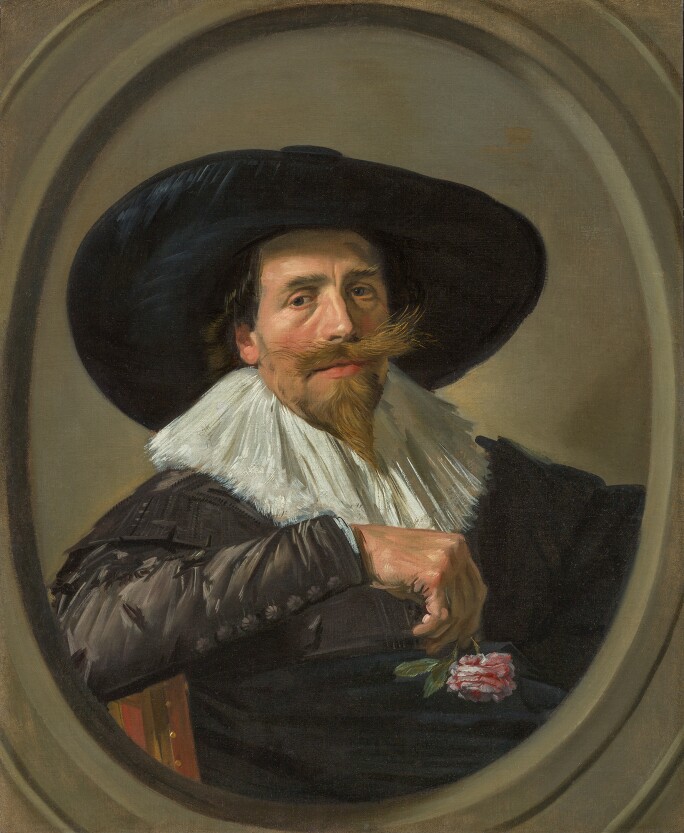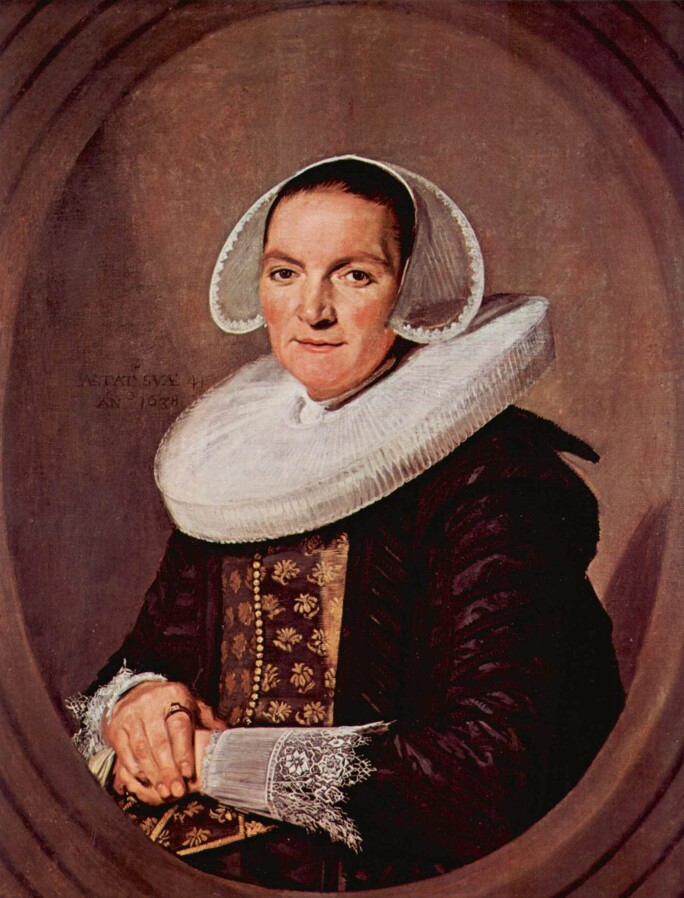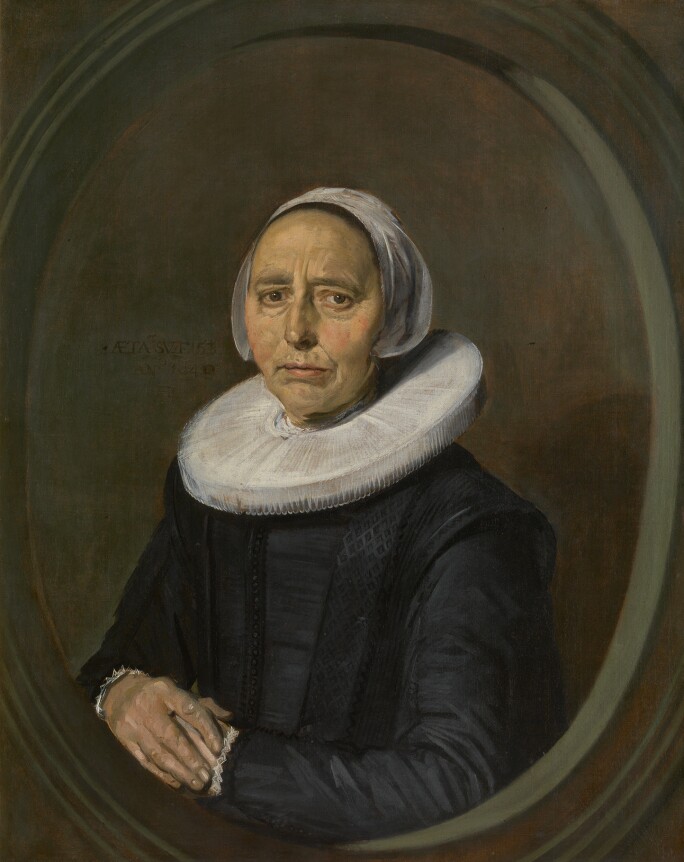By the mid 1630s Frans Hals was at the height of his powers. He was much in demand for his portraits of the newly wealthy in his native city of Haarlem, and his reputation as the leading portraitist of the Dutch Golden Age was only starting to be challenged by Rembrandt. This arresting Frans Hals portrait of a fifty-year-old man has recently emerged from a New York private collection, where it remained unseen by scholars and the public for over sixty-five years, and unconsidered by all Hals specialists for the last forty-six years.
D uring its many years of obscurity, the varnish on this painting darkened, hiding the swift expressive brushwork that is characteristic of Hals’ brilliant technique. Thanks to a recent cleaning and programme of study by Martin Bijl, this portrait can now be appreciated once again in its former glory, as a dashing portrayal of a handsome and prosperous gentleman. The Hals scholars Claus Grimm, Norbert Middelkoop and Pieter Biesboer who were able to study the painting during the course of conservation regard this as an excellent example of the artist’s work.
Furthermore, Claus Grimm, currently the world’s foremost expert on the artist, will include it as a fully authentic painting by Frans Hals in his forthcoming revised and updated catalogue raisonnéof Frans Hals’ paintings. Grimm writes that following the removal of overpaint, Hals’ brushwork is to be found in all parts of the painting. As Martin Bijl noted, the slanting diagonal bias in the brushwork, a hallmark of Hals’ mature style, is visible throughout but especially in the sitter’s face.
This portrait fits well into Frans Hals’ stylistic development in the mid-1630s, when the artist, already in his mid-fifties but increasingly confident in his genius, adopts a greater economy in his bravura brushwork. An excellent example of this is his portrait of Pieter Tjarck in Los Angeles, also a half-length set in a painted oval opening. A work more closely allied to the present work is the Portrait of a Man, one of a pair of pendants in the Royal Collection in Stockholm, which is signed and dated 1638. This portrait is strikingly similar to the present painting: in each a man is seen in half-length poised behind swiftly indicated trompe l’oeil oval windows, with his right-hand gesturing to his breast, as if to indicate subtly the inclination of his heart, while the other hand holds his glove.

Like the Stockholm pair, this portrait is set within an illusionistically rendered stone window opening. This is a device that Hals deployed for much of his career, from as early as circa 1615, in the Portrait of a Man holding a Medallion in the Brooklyn Museum of Art, then again in the almost defiant Portrait of a Man in Chatsworth of 1622, using it further in his Portrait of a Bearded Man in the Metropolitan Museum in 1626. The first time we see the device uniting surviving pendants is in 1626, with the small pair of portraits on panel, also in the Metropolitan Museum: the Portrait of Petrus Scriverius and his wife, Anna van der Aar.

By an amazing twist of fate all of these examples were preserved within ten miles of the present painting for well over half a century. As Slive indicates, Frans Hals apparently ceased to employ the illusionistic device of the porthole window in his portraits around 1640, the date on the painting in Ghent. Yet Hals’ use of simulated frames did not go unheeded by his fellow painters, including Rembrandt who became fascinated with trompe l’oeil imagery in the 1640s. Rembrandt’s 1646 etching of Jan Cornelis Sylvius, shows the preacher breaking through the picture plane, extending a hand towards us that actually casts a shadow on the framing device.
Close examination of the present portrait reveals that as originally conceived, only the sitter’s right arm and hand was to be seen. Hals added the left hand holding the glove at the last stage of painting. By doing so he gave the painting a balance that would otherwise have been lacking, and increased the sitter’s physical presence. We know why the sitter in the Stockholm portrait gestures towards his heart, because the 38 year old man is in love with his 44 year old wife, who now hangs next to him in the Royal Collection in Stockholm. With the present portrait we are robbed of this symbiotic relationship with a pendant, unless the Portrait of a fifty-three year Old Woman in Ghent, dated 1640, is the true companion to our picture.

Both pictures were together in collections and considered as pendants from at least the late 18th Century until the end of the 19th Century, and were reproduced as pendants in William Unger’s compilation of reproductive prints after Frans Hals, published in 1874. Both Seymour Slive and more recently Claus Grimm argued for their linking, while Slive admitted that the separation of date is unusual, though not unknown. It is plausible that the Ghent portrait could have been painted to mark a possible union of the couple in 1640. Grimm goes further, arguing that these pendants, and those of Pieter Tjarck in Los Angeles and Maria Larp in London that share similar painted oval openings, may have portrayed members of the same family, so their common presentation is deliberate.
Inexplicably, Slive, who presumably only knew the present portrait from photographs, and without the benefit of seeing it cleaned, and despite believing it to be the pendant of the Ghent portrait, considered it to be a studio piece. Today it is difficult to understand how he could have ignored the evidence of a signature and date of 1635 on the painting, but he wrote in an era when all inscriptions were regarded as suspect, especially on paintings by Rembrandt.
Current scholarship of Dutch 17th Century painting understands how authentic signatures should be viewed as one element amongst others that can contribute towards a consensus of opinion regarding authenticity. The signature and date on this painting are definitively original, since they have withstood all technical examinations, and they are seen to be integral to the original painted surface when viewed under a microscope. In this context it is perhaps worth remarking that in old photographs the Ghent portrait looks feeble and unconvincing, whereas in its current well-conserved state it is vibrant and display Hals’ bravura brushwork throughout.


